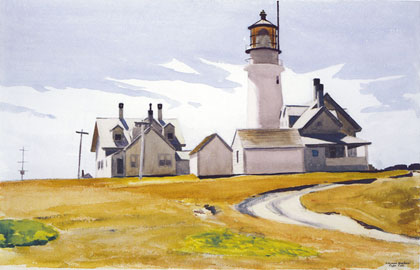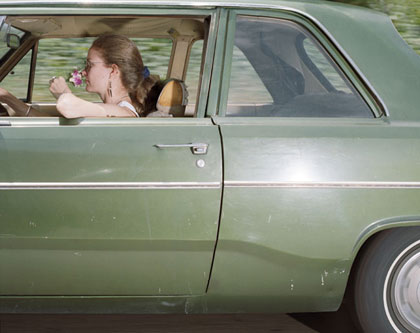Posts tagged transit
 Chinatown bus geography
Chinatown bus geography

These two are Chinatown bus advertisements for routes that go to the more obscure regions of the eastern United States. (Chinatown bus goes all over, not just Boston, NYC, Philly and Washington). Notice how they emphasize the area codes.
That is because many Fujianese restaurant workers are not educated and thus don’t really read and write English. Given that. How do you divide the United States? Not through towns and states. You do it through numbers—hence the area codes.
Karan Talwar, a blogger and Freakonomics reader, writes about an interesting traffic nudge near Shimla, India. The roads into Shimla are notoriously dangerous, and traffic signs have done little to lessen the problem. So local authorities began constructing temple shrines at hot spots. The nudge worked like a charm: “Turns out even though the average Indian has no respect for traffic laws and signs, they will slow down before any place of worship and take a moment to ask for blessings!”
 Soft Serve, by Kevin Cyr
Soft Serve, by Kevin Cyr
 Parking is such sweet sorrow
Parking is such sweet sorrow
Disney Hall’s six-level, 2,188-space underground garage cost $110 million to build (about $50,000 per space). Financially troubled Los Angeles County, which built the garage, went into debt to ?nance it, expecting that parking revenues would repay the borrowed money. But the garage was completed in 1996, and Disney Hall—which suffered from a budget less grand than its vision—became knotted in delays and didn’t open until late 2003. During the seven years in between, parking revenue fell far short of debt payments (few people park in an underground structure if there is nothing above it) and the county, by that point nearly bankrupt, had to subsidize the garage even as it laid off employees.
The county owns the land beneath Disney Hall, and its lease for the site specifies that Disney Hall must schedule at least 128 concerts each winter season. Why 128? That’s the minimum number of concerts that will generate the parking revenue necessary to pay the debt service on the garage. And in its ?rst year, Disney Hall scheduled exactly 128 concerts. The parking garage, ostensibly designed to serve the Philharmonic, now has the Philharmonic serving it; the minimum parking requirements have led to a minimum concert requirement.
 Descending like a dove
Descending like a dove
 Shipping the fridge
Shipping the fridge
In the first half of the last century, railroads used these and other advantages of steel wheel technology to provide services we tend to think of as modern, or in some cases even futuristic. The Pacific Fruit Growers Express delivered fresh California fruits and vegetables to the East Coast using far less energy and labor than today’s truck fleets. The rhythmically named Chicago, Milwaukee, St. Paul, and Pacific (a.k.a. the Milwaukee Road) hauled hundred-car freight trains over the Cascade and Rocky Mountains using electric engines drawing on the region’s abundant hydropower. The Railway Express Agency, which attached special cars to passenger trains, provided Americans with a level of express freight service that cannot be had for any price today, offering door-to-door delivery of everything from canoes to bowls of tropical fish to, in at least one instance, a giraffe. Into the 1950s, it was not uncommon for a family to ship its refrigerator to and from a lakeside cabin for the summer via the REA; thanks to the physics of steel-on-steel conveyance, appliance-sized items could be moved for trivially larger amounts of money than smaller goods (think about that the next time you shell out an extra $50 to check a suitcase of dirty clothes on a domestic flight).
 Use, storage, and sale
Use, storage, and sale
Carry a plastic bag in Delhi and you could be imprisoned for five years. Officials in India’s capital have decided that the only way to stem the rising tide of polythene is to outlaw the plastic shopping bag.
According to the official note, the “use, storage and sale” of plastic bags of any kind or thickness will be banned. The new guideline means that customers, shopkeepers, hoteliers and hospital staff face a 100,000 rupee fine (£1,370) and a possible jail sentence for using non-biodegradable bags….
Civil servants said that punitive measures were needed after a law prohibiting all but the thinnest plastic bags – no thicker than 0.04mm – was ignored.
Although the government had originally concluded that plastic bags were too cheap and convenient to be disposed of, the authorities appear to have been swayed by environmentalists who pointed out that used bags were clogging drains and so providing breeding grounds for malaria and dengue fever. There is evidence that prohibition of plastic bags can work. Countries such as Rwanda, Bhutan and Bangladesh have all had bans enforced.
 Love plus boredom
Love plus boredom

1,000 Postcards is a short radio piece by Rene Gutel, about how her father, a bus driver, finding his job sometimes dull, decided to write her a postcard every day while she was away at college. I like the fact that after a while the whole campus became fascinated by the postcards, and she found herself having to read that day’s instalment to student after envious student. Funny and sweet.
 That’s progress for you
That’s progress for you
“In the 1970s, ‘80s and ‘90s, carmakers all offered super-high-efficiency cars,” says Eric Noble, president of the Car Lab, an auto industry research and consulting group. “Now that consumers are clamoring for them, those cars are pretty much all gone.”
For the 1992 model year, car buyers had the choice of 33 cars that had a combined city and highway EPA rating of at least 30 miles per gallon. For the current model year, there are 12. And though the 1990s had its share of gas guzzlers, it’s notable that the two-wheel-drive Ford Explorer from 1992 had better fuel efficiency (17 mpg) than the same model in 2008 (which gets 16).
With demand for efficiency surging, carmakers are racing to improve their lineups. General Motors Corp., which currently doesn’t have any cars that top 30 mpg combined, said last month that it would spend $500 million to produce a new compact car for 2011, the Cruze, that would reach 45 mpg on the highway. That’s about 13 mpg below the rating for its most fuel-efficient Geo Metro 14 years ago.
In Ecuador, the sources of some of the best bargain eating can’t be marked in a guidebook or circled on a map. In fact, even a well-versed local won’t be able to tell you exactly when and where to find these particular meals. Mostly, you just have to sit back until they find you, which they inevitably do, courtesy of a series of one-person mobile-food-stand entrepreneurs who hop aboard public buses, sell their delicious and amazingly varied wares and hop out until the next group of captive diners rolls by.
These gray-market vendors thrive on the ridership on Ecuador’s efficient and extensive bus system. In Cumandá terminal in Quito, more than 30 competing bus companies vie for customers, shouting impending departures from their ticket windows, so the wait is never long and the price is right. Even at the extranjeros, or foreigners’, price, tickets average $1 per hour of travel (the American dollar has been the official currency since 2000). Besides the music, all buses come with air-conditioning — and a chance to acquaint yourself with local culture and cuisine.
On my recent three-and-a-half-hour bus journey down the Pan-American Highway, the ice-cream man was only one of dozens of people who jumped aboard at various stops as we beat a path southward from the capital city of Quito to the nation’s adventure mecca, Baños, through the valley known as Avenue of the Volcanoes. The vendors hawked everything from herbal cures to watches, but the real one-of-a-kind items were brought aboard by people clutching baskets or coolers, like the helado man. The homemade sweets and snacks they sell, along with the fast food cooked up at stands around markets and bus stations, offered a thorough sampling of regional specialties.










